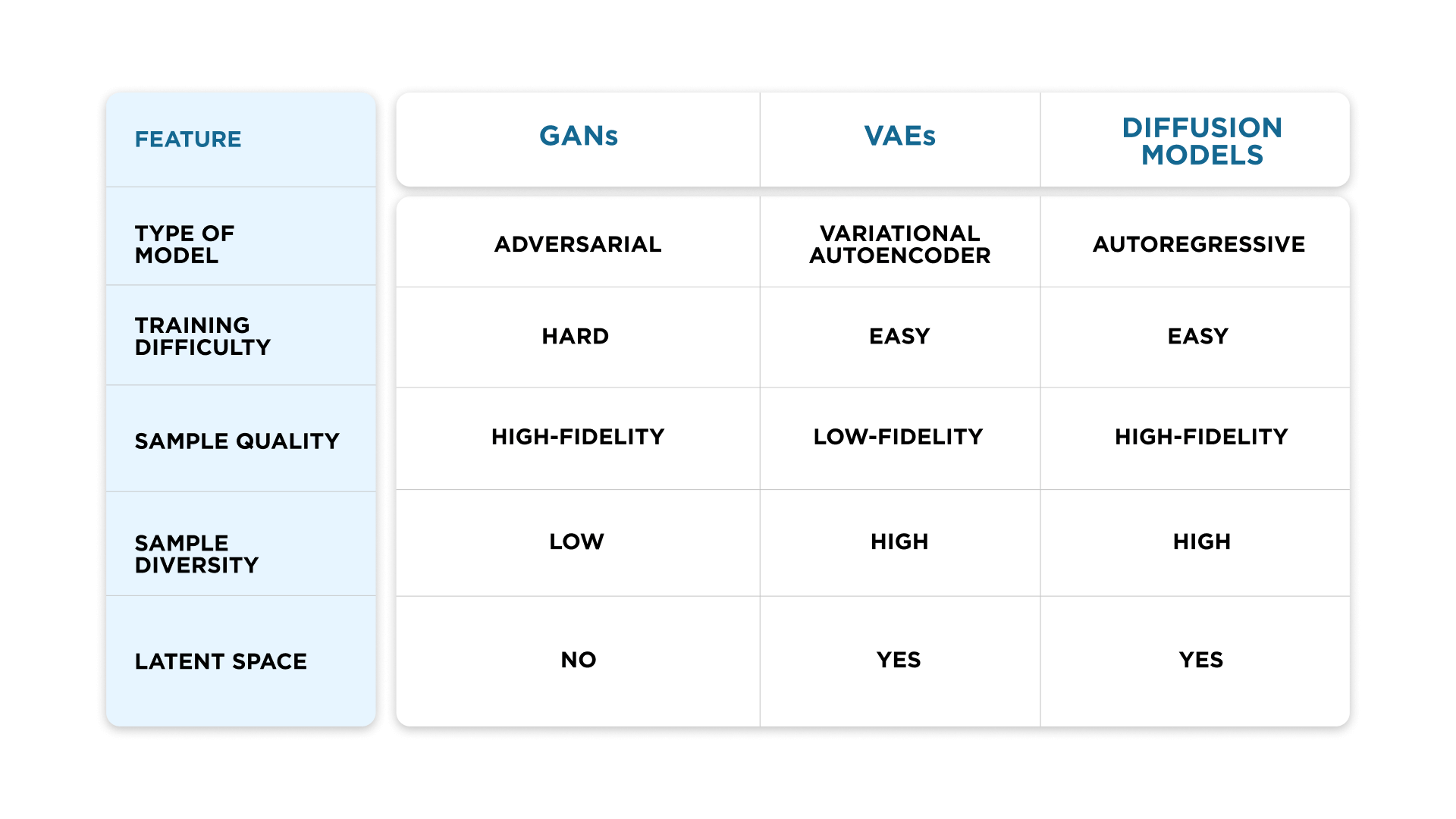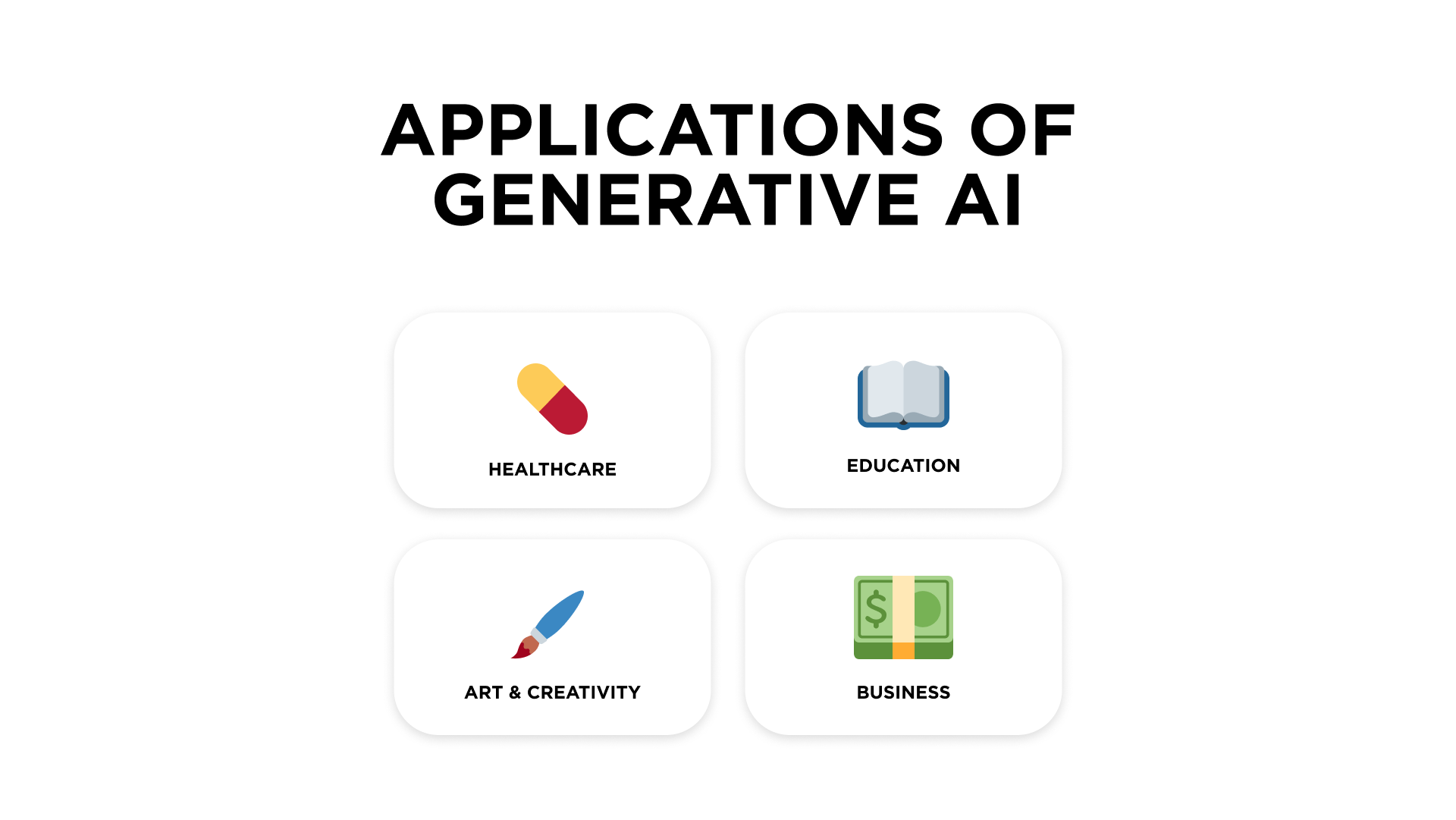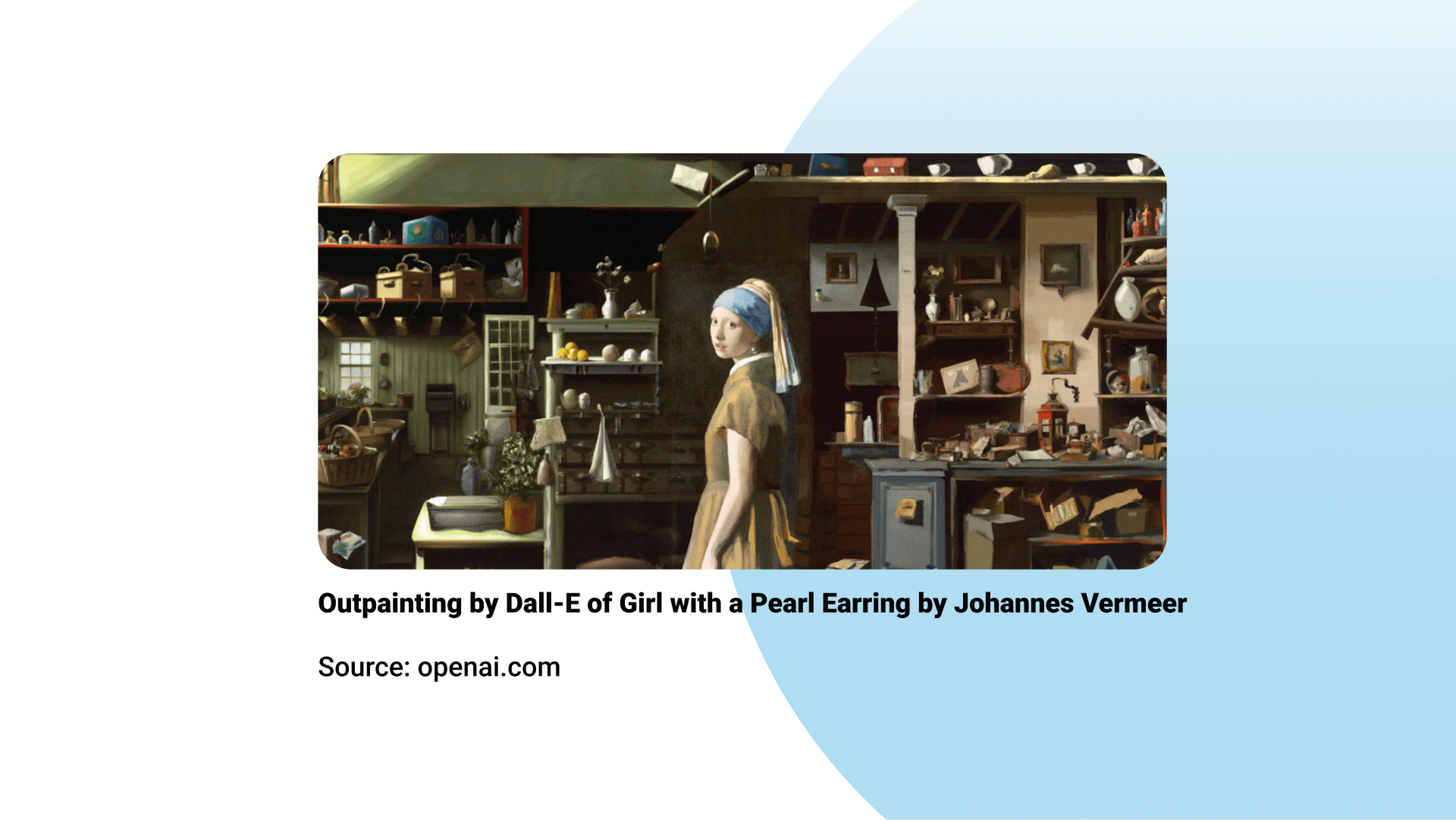Generative AI for Creativity and Innovation: What You Need to Know
Exploring the capabilities of generative models for business and more.

Generative AI is a rapidly evolving field of artificial intelligence holding the potential to revolutionize many industries and aspects of our lives. While the technology is still in its early stages of development, according to S&P Global, the generative AI software market is expected to reach $3.7 billion by the end of 2023. AI algorithms, trained on large datasets of existing data, can be used to create images, text, music, and code. In this article, we will explore the basics of generative AI, discuss some of its current applications, and look at the future of this exciting field.
Table of contents
What is the meaning of generative AI?
Generative AI is a subset of artificial intelligence, capable of creating new content such as images, text, music, and code by learning from extensive datasets and using this knowledge to produce novel outputs.There are many ways in which generative AI can be used:
- Image generation. Generative AI models can create realistic images of people, places, and even things that don't actually exist. Tools similar to DALL-E can be used for a variety of purposes, such as creating new art, designing products, and developing video games.
- Text generation. Generative AI models can be used to generate text, such as articles, blog posts, and even books. Such tools as ChatGPT can be useful for writers, journalists, and other professionals who need to create large amounts of text content. Also, chatbots can be used to improve and optimize customer support and communication with brands.
- Music generation. The technology can be employed to generate new music, including melodies, harmonies, and rhythms. This can be used by musicians and composers to create new works of music, or by developers to create soundtracks for video games and movies.
- Code generation. Generative AI models can be used to generate code in a variety of programming languages. This can prove to be a useful assistance for software developers by automating tasks and speeding up the development process.
As generative AI technology continues to improve, we can expect to see even more innovative and groundbreaking applications emerge in the coming years.
Comparison of different generative models
Broadly speaking, AI models can be categorized into two types: Traditional AI and Generative AI.
Traditional AI, often referred to as Narrow or Weak AI, is designed to perform a specific task intelligently. It learns from data and makes decisions or predictions based on that data. Examples of traditional AI include voice assistants like Siri or Alexa, recommendation engines on Netflix or Amazon, or Google's search algorithm.
On the other hand, Generative AI can create something new. For instance, if you give a starting line to it, it can generate a whole story, complete with characters, plot twists, and a thrilling conclusion. Generative AI uses AI foundation models, which are trained on a broad set of unlabeled data that can be used for different tasks, with additional fine-tuning.
The models train deep neural networks to model the distribution of training samples and can be applied to a diverse set of domains such as image, audio, video synthesis, and natural language processing. Three main types of AI models include Variational Autoencoders, Generative Adversarial Networks, and Diffusion models.

Generative Adversarial Networks (GANs) learn to generate new data similar to a training dataset. It consists of two neural networks, a generator, and a discriminator, that play a two-player game. The generator takes in random values sampled from a normal distribution and produces a synthetic sample, while the discriminator tries to distinguish between the real and generated sample. The generator is trained to produce realistic output that can fool the discriminator, while the discriminator is trained to correctly distinguish between the real and generated data.
Variational Autoencoders (VAEs) consist of an encoder and a decoder. The encoder maps high-dimensional input data into a low-dimensional representation, while the decoder attempts to reconstruct the original high-dimensional input data by mapping this representation back to its original form. The encoder outputs the normal distribution of the latent code as a low-dimensional representation by predicting the mean and standard deviation vectors.
Diffusion models consist of forward diffusion and reverse diffusion processes. Forward diffusion is a Markov chain that gradually adds noise to input data until white noise is obtained. It is not a learnable process and typically takes 1000 steps. The reverse diffusion process aims to reverse the forward process step by step removing the noise to recover the original data. The reverse diffusion process is implemented using a trainable neural network.
Generative AI use in different fields
Generative AI has a wide range of potential applications in different fields, both in art and science, business and government.

Healthcare
Generative AI has the capability to generate synthetic medical images like MRI scans and X-rays. These images can be utilized for training and evaluating machine learning models for medical diagnosis and treatment. It can also be used to develop personalized treatment plans for patients, taking into account their individual medical history and genetic makeup. Furthermore, generative AI can contribute to the creation of new drugs and therapies by simulating the behavior of molecules and proteins.
Education
Generative AI can be used to create personalized learning content, interactive educational simulations and games, as well as provide feedback on student work.
Personalized learning materials can be tailored to each student's individual needs and learning style, based on their current knowledge level, interests, and learning preferences. Interactive educational simulations and games can provide students with a hands-on learning experience that can help them to better understand complex concepts. Feedback on student work can help students to identify and improve their strengths and weaknesses.
Creative industries
Generative AI holds immense potential to revolutionize the realm of art and entertainment. It can be harnessed to create novel forms of artistic expression, including music, paintings, and videos. Beyond just creation, generative AI is also a powerful tool for professionals in the creative industry. Graphic designers and filmmakers, for instance, can leverage it to develop innovative tools and techniques that enhance their work.

However, the applications of generative AI don’t stop at creation and professional use. It also plays a pivotal role in personalizing the creative experience for consumers. For example, it can generate tailored recommendations for new movies and TV shows, thereby enriching the viewing experience of consumers.
Business
Generative AI models also transform the way businesses operate and innovate. It can be utilized to develop new products and services that cater to the specific needs of consumers. For instance, it can generate personalized shopping recommendations based on a user's browsing history and preferences, enhancing the overall shopping experience. Similarly, targeted marketing campaigns can be designed using generative AI, enabling businesses to reach their potential customers more effectively.
The technology can also be employed in areas such as fraud detection where it can analyze patterns and anomalies in data to identify potential fraudulent activities. Meanwhile, generative AI can evaluate various factors and predict potential risks, helping businesses to take proactive measures.
Moreover, generative AI is a powerful tool for data analysis. It can sift through vast amounts of data to generate new insights and discoveries. These insights can help businesses understand market trends, customer behavior, and other key factors that influence their operations. Consequently, businesses are able to make informed decisions that contribute to their growth and success.
Current and future developments of generative AI
Thanks to the advancements in computing hardware and machine learning algorithms, generative AI models are becoming increasingly powerful and efficient. This has expanded the range of tasks they can handle, from generating high-quality images and videos to translating languages and crafting various types of creative content. The accessibility of these models has also improved, with the advent of cloud-based platforms and open-source tools making it easier for researchers and developers to experiment with generative AI and build new applications.
Furthermore, generative AI is being employed to develop novel applications across diverse fields such as healthcare, education, creative industries, and business. For instance, it's being used to develop new drugs and therapies, create personalized learning materials for students, and generate new forms of art and entertainment.
In the realm of generative AI, omnichannel messaging platforms, such as Umnico, can be integrated with chatbots powered by AI models to automate responses or generate personalized content for customers across these various channels. This not only improves efficiency but also provides a more tailored and engaging customer experience.
Looking ahead to future developments, we can expect generative AI models to become even more powerful and versatile due to ongoing research in artificial intelligence. This will enable them to tackle even more complex and challenging tasks. As the technology continues to evolve, we anticipate seeing even more innovative applications emerge. For instance, generative AI could be used to create new forms of user interfaces, develop novel ways to interact with our environment, and even create new forms of life.
Ethical and social issues of generative AI
Despite its transformative potential, the rapid development of generative AI also brings up several ethical and social issues that warrant attention:
- Distribution of harmful content: AI systems can create human-like content that boosts business productivity. However, they can also churn out harmful or offensive content. Tools like Deepfakes can fabricate false images, videos, text, or speech that can be driven by an agenda or used to disseminate hate speech.
- Copyright and legal exposure: models are trained on vast data volumes, which can potentially infringe upon the copyrights and intellectual property rights of other entities. This could result in legal, reputational, and financial risks for the company using pre-trained models.
- Data privacy violations: The underlying training data may harbor sensitive information, including personally identifiable information (PII).
- Sensitive information disclosure: If the training data contains sensitive information, there's a risk that the generative AI system could inadvertently disclose this information.
- Amplification of existing bias: The content generated automatically can perpetuate or amplify the biases learned from the training data, leading to biased, explicit, or violent language.
- Workforce roles and morale: The introduction of generative AI in the workplace could lead to changes in workforce roles and morale.
- Lack of transparency: Generative AI systems are often perceived as “black boxes”, with their internal workings being difficult to comprehend.
Conclusion
Generative AI is a transformative technology that holds immense potential across various sectors. From creating content to developing new medicine, the applications of generative AI are vast and far-reaching. Platforms like Umnico represent the kind of digital solutions that can be enhanced with generative AI to revolutionize customer communication and marketing strategies for brands of various sizes and in various industries. You can try working across all communication channels from a single interface for free today for free.

Subscribe to Umnico news!
Be the first to get recommendations and up-to-date information
